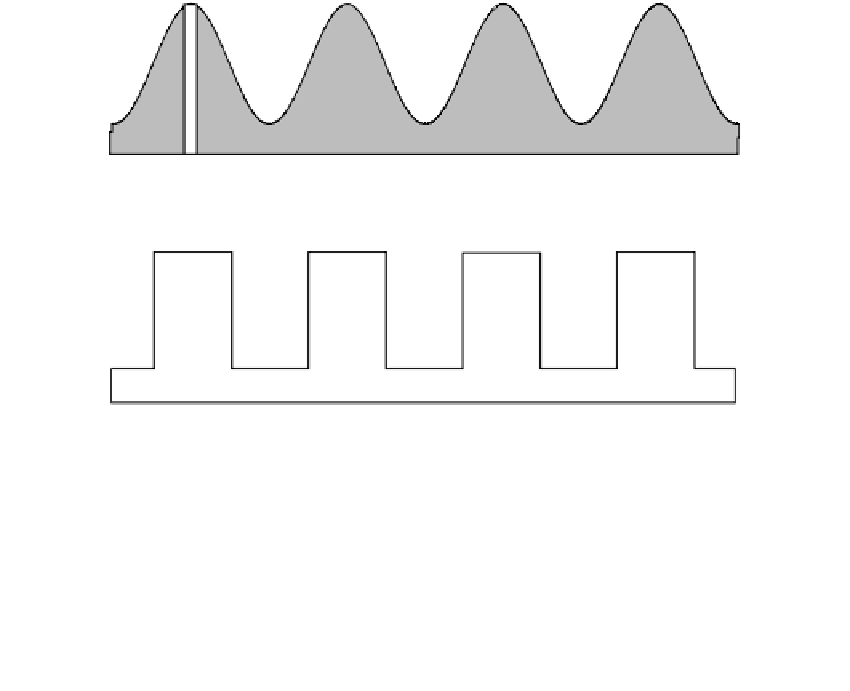Image Processing Reference
In-Depth Information
miss the target value by as much as half a step. If the steps are smaller, the errors are
smaller. Therefore the noise introduced by quantization errors will be less. Sampling with
larger word sizes reduces the step size for the quantization.
Quantization errors occur because the sampling has not detected the correct level, or
when converting back to analog, the correct output level is not generated. Some quantiza-
tion errors happen because the timing of the samples was imperfect. If the sample clock is
irregular then some samples will be taken at the wrong time.
Quantization errors are more severe as the highest frequencies are sampled. Figure
7-9 shows a 22.05 KHz sine wave being sampled at 44.1 KHz. In the lower part of the illus-
tration the waveform is reconstructed using square samples and then, in the third wave-
form, joining it up with straight lines. None of these are reconstructing the original wave
shape as it was. This introduces some harmonic overtones that alter the timbre of the
sound. A sine wave sounds quite different from a square or sawtooth waveform.
It can get a lot worse than this. At or near the Nyquist limit, samples may miss entire
waveforms due to phasing errors.
Original sine wave samples twice every cycle
Reconstructed square wave from sample & hold logic
Reconstructed saw tooth from linear interpolated sample values
Figure 7-9
Waveform reconstruction from samples.






















Search WWH ::

Custom Search